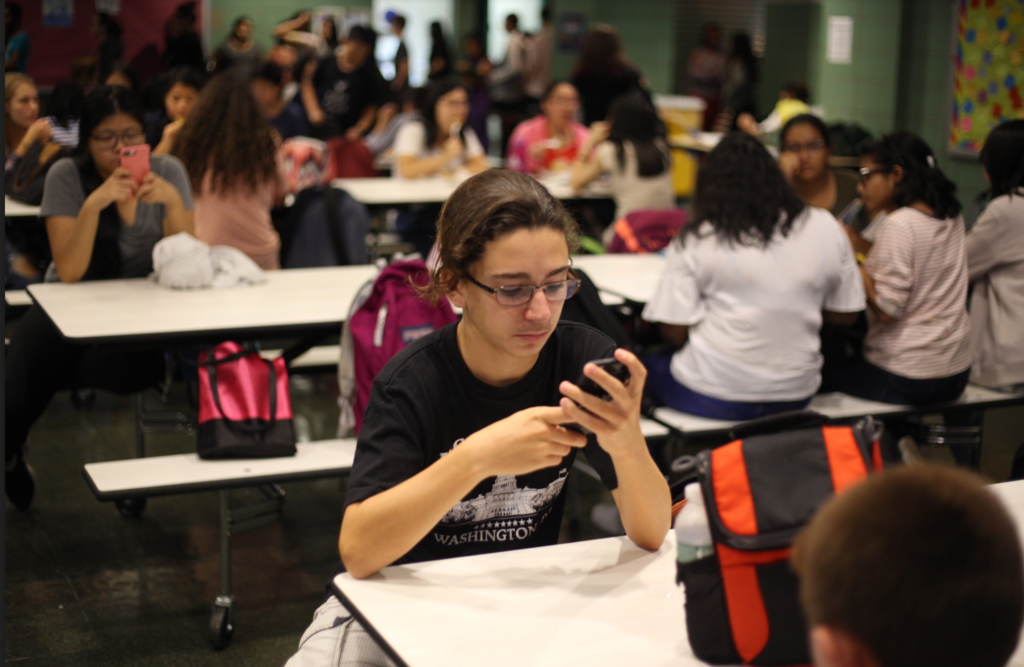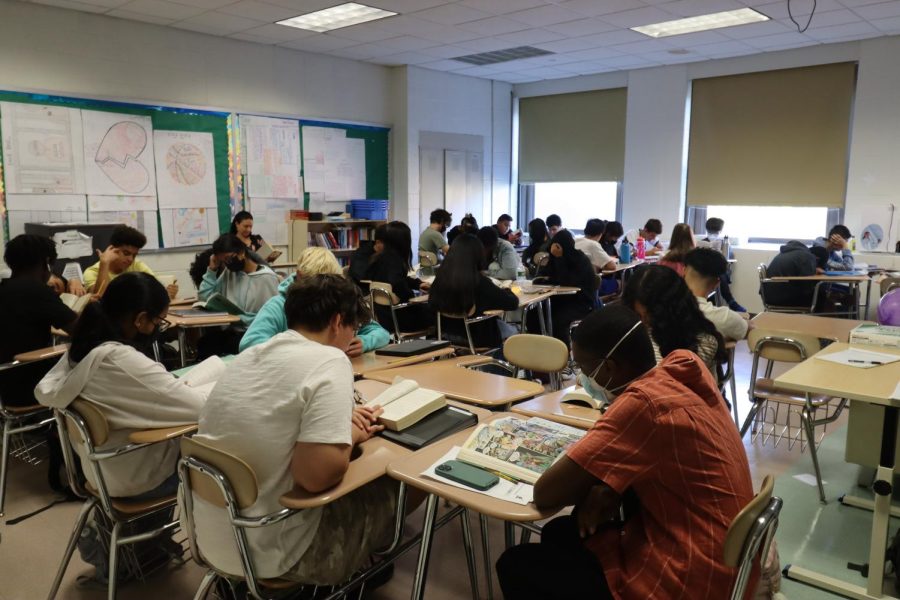
The strongest weapon in Star Wars: The Force Awakens isn’t a lightsaber. It’s not even the force. It’s nostalgia.
Disney knows this: the barrage of familiar visual and commercial cues in the marketing campaign for the film, which opened in theaters December 18, make viewers reminisce about childhoods spent in a “galaxy far, far away.”
The commercials made for The Force Awakens rely heavily on iconic scenes and music found in the original trilogy, meant to recall the emotional attachment many viewers have to the classic series. However, there are also many younger fans—born after the franchise’s initial theatrical run—who are equally excited to see it. After watching the long-awaited trailer, Sophomore Mikayla Nelson reminisces, “I see myself in the theater with my grandmother when she took me to see Episode III of the new trilogy when I was five. It’s just familiar.”
Freshmen Arbid Yusuf is also reminded of his earlier years, spent re-enacting Star Wars battles with plastic lightsabers, “Star Wars represents a lot of things. It means action and adventure, as well as comedy. It has always appealed to me since I was very young and has been with me as I grew up.” Senior Daniel Corona agrees, “I grew up with these movies. And not just the movies but the games and books and lore,” for them, Star Wars is an omnipresent part of their childhood.
But Star Wars isn’t just a cultural phenomenon, it’s a force that transcends generations and unites them in a love for a fantastical galaxy filled with characters on a journey toward self-discovery. English teacher Brian Sweeney, known for his,“unhealthy obsession for Star Wars,” believes that Star Wars is about bridging generational gaps.“What makes it powerful with families is that it’s about your generational relationships,” he explains. “That’s why parents want to share it with kids and why kids get a lot out of it.”
However, due to heavy advertising, many of the younger generation are exposed to the Star Wars culture before watching the original movies. This generation “kind of grows up knowing the characters before you’ve seen the movies, and before you’re ready to see the movies in an actually entertaining way.” Which is why Mr. Sweeney was hesitant to introduce his son to the movies at such a young age, “My son was given a Star Wars alphabet book, and he learned the alphabet through Star Wars. There’s something unsettling about the fact that you use Star Wars to teach the basic building blocks of language, that’s how pervasive it is in America.”
Yet Star Wars’s ubiquitousness also has the ability to bridge nations together. Assistant Principal Rafal Olechowski was first introduced to Star Wars when he was a young boy in Poland. It shaped his perspective on America, “The film was subtitled in Poland so I only really understood it visually, and later on in my life that visual impact was very important.” The ability of Star Wars to appeal to such a wide audience through the powerful visual cinematography is what makes it a timeless classic that is able to cross borders and be adored by people from all around the world. “This is what America can do, ” Mr. O continued, “which really made made me think so positively about America. You get lost in that film and that’s what I associated with America while a young person in Poland. If the film can make you feel that way then, just imagine what America can make you feel like.”
Star Wars takes archetypes found in ancient Greek mythology, making it a perfect way to introduce the framework of quests to students. That is why English teacher Katherine Yan uses some of the Star Wars films in correlation with the ninth grade curriculum. It serves as a well known modern myth in order to connect with scholar Joseph Campbell’s work on the “Hero’s Journey.”
“Through Luke, Leia, and Han Solo, you can see the journeys that [Campbell] talks about such as the serendipitous hero, the summoned hero, and the different father quests.” By taking these two forms of media, Ms. Yan can show the parallels between the mythological heroes and the ones showcased in the Star Wars franchise. “Seeing Telemachus and Odysseus and their father quest, it really relates to how this archetype of a hero’s journey is in different cultures and throughout the world in different times.”
But while the plotline of Star Wars features a standard quest, and the ‘good versus evil’ arc that many stories feature, some think there’s more to it than just what’s come before.
Mr. Sweeney explains, “[Star Wars] does something very smart in terms of contemporary myth making. Starting the story with ‘a galaxy far, far away,’ makes it sound like a sci-fi myth for the future, but this is a futuristic vision that doesn’t look like the future since it also takes place ‘a long time ago.’ So, it looks beat down and old and lived in. That blend of a very old feeling and a very futuristic feeling makes it a perfect kind of mythological landscape for America at this point in time.” It is this, he says that makes it resonate with such a large audience: “they are not just trying to recapture a dead mythology but make a new one, and that’s why I think it struck a chord.”
The legacy that Star Wars has left behind is why people are so excited to watch The Force Awakens.
“It’s nice to be part of a larger continuum,” says Classical Latin Teacher Jonathan Owens. “I grew up watching Star Wars. It’s part of my DNA,” he adds, describing it as an intrinsic part of his childhood. In particular, he is excited to see the characters he grew up with, grow up: “it would be interesting to see how time has affected the rebellion in the characters, how they’ve matured.”
For many, there’s something inherently powerful to seeing actors like Harrison Ford, Carrie Fisher, and Mark Hamill reprise roles they haven’t done in 30 years.
Perhaps the most exciting thing about the new Star Wars movie coming out is that it allows this generation to experience the wonder their parents experienced when watching it for the very first time. They finally get their chance to experience something first and to be part of an audience that isn’t just passed down some secondhand experience–but to be in the movie theaters seeing history being made “a long time ago in a galaxy far, far away.”

































